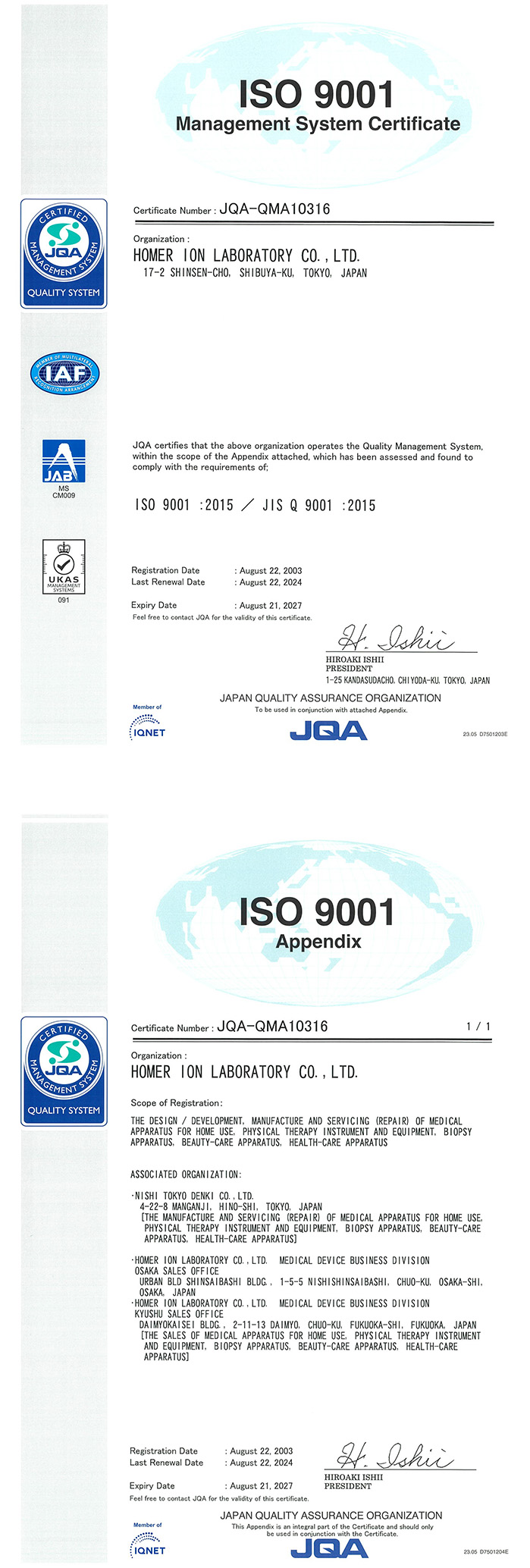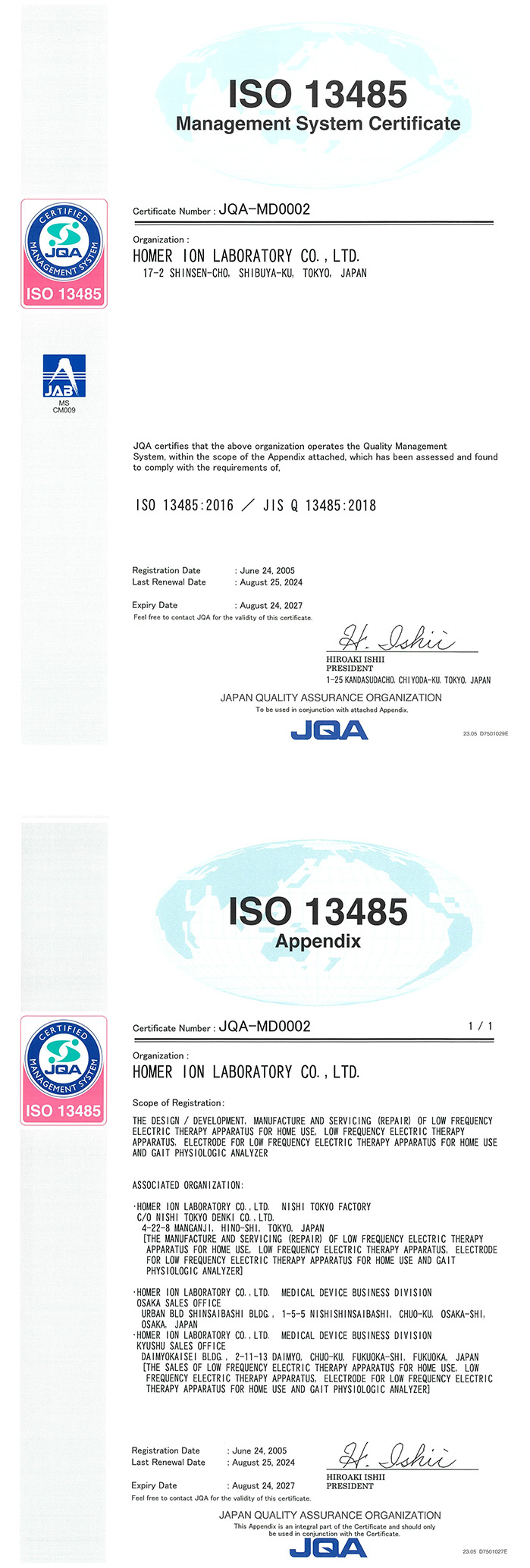

Since its establishment in 1963, HOMER ION Laboratory Co., Ltd. has consistently focused on “low-frequency therapy” and has been advancing the development of its unique products. Among these, our “G-TES,” which primarily targets muscles, is now used in over 1,000 facilities nationwide in Japan. In this interview, we would like to introduce one of our researchers who is conducting basic research focusing on “muscles and electricity” at our company.
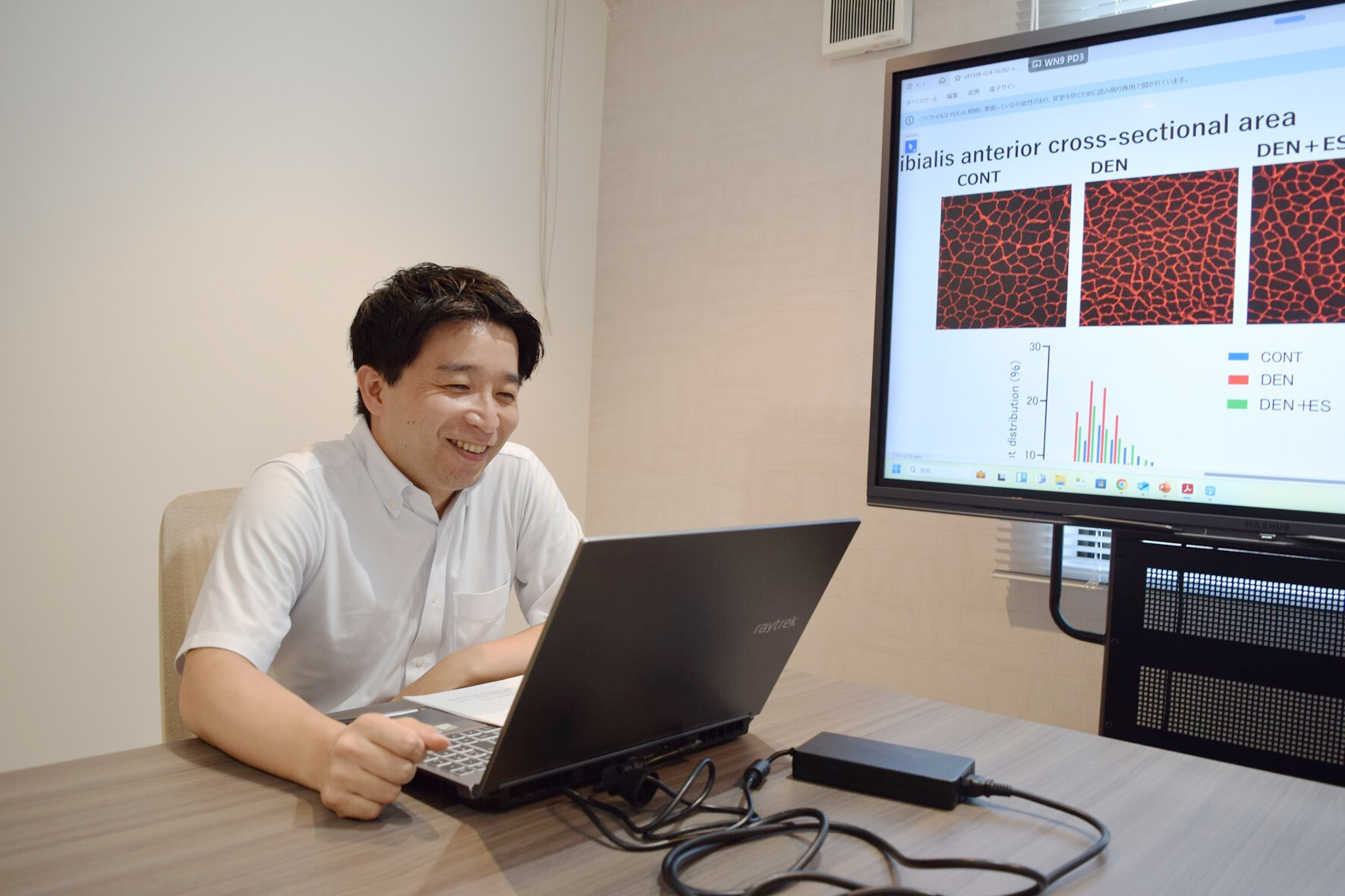
Q. Can you tell us about how you came to join HOMER ION Laboratory Co., Ltd.?
It has been 8 years since I joined HOMER ION Laboratory Co., Ltd. My previous job was at a company that focused on scientific analysis. There, I was involved in analyzing materials such as asbestos used in construction and gases released from incinerators. My role was that of an analyst.
Q. Is this your first time working in a research role?
Yes, it is. My previous work in analysis mainly involved considering the subjects of analysis, but in research, I believe it’s not just about analysis and consideration—it’s a field that allows for creativity and the ability to connect things in various ways. That’s why I decided to pursue a career as a researcher.
Q. What was your major in university?
I majored in biology and studied the movement of cells. Among the various fields, I found the visual aspect of cells, especially when viewed under a microscope, to be fascinating. It wasn’t so much that I knew exactly what I wanted to do, but I thought it looked interesting, so I decided to start from there. While my research didn’t focus on human cells, it mainly revolved around the cytoskeleton and cell functions. There are proteins in cells that are involved in movement, and I primarily focused on studying those.
Q. Does this relate to your current research?
I can’t say it’s exactly the same, but in terms of “movement,” there may be some similarities. I’m not sure if I’m particularly skilled in it, but it’s definitely a field I enjoy. On the other hand, I didn’t have any knowledge about electrical aspects, so I think there’s still a lot I don’t know. I believe there are still many discoveries to be made, so I find it exciting and full of curiosity, wondering, “What’s out there?”
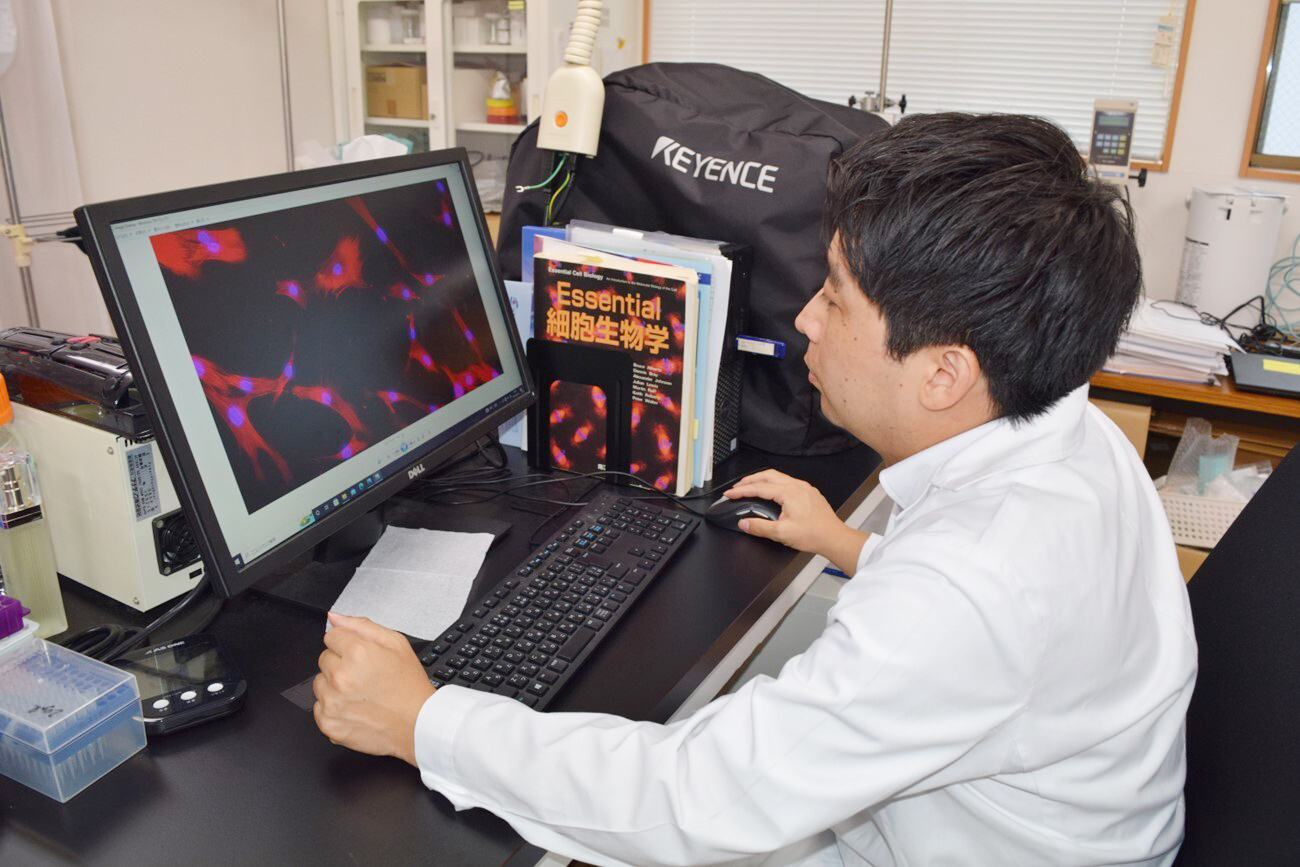
Q. Can you briefly explain the basic research you are currently working on? Also, how is this basic research related to the development of your company’s products?
Specifically, my research focuses on the mechanism through which B-SES stimulation on rats achieves a spasticity suppression effect. We have already gathered evidence supporting the effects of B-SES on muscle shortening and hypertonia, and now we are researching whether there is a more effective new mode beyond the previous ones. While research on muscle atrophy suppression, muscle training, and resistance training has been conducted elsewhere, our research, which focuses solely on electrical stimulation, is unique to our company. By exploring the capabilities of B-SES, we hope to uncover new insights that could lead to a more effective mode for suppressing muscle atrophy or suggest new potential applications. I believe there are many possibilities for what we can propose.
Q. What are the main challenges or issues you face in the process of basic research?
Including the basic research we are conducting, this applies to research as a whole. Research is about doing things no one has done before, things that haven’t been found when you search for them.You form a hypothesis, of course, but results don’t always turn out as expected—this happens all the time. It’s a constant process of trial and error. Research is about delving deeper into that, but since we are part of a company, there’s a need to produce results, which makes it challenging at times. However, I don’t view these challenges negatively, because that’s also what makes the work interesting. I’m not averse to the struggle. Specifically, since there is no existing B-SES product for animals, we work closely with the development team to consult on even the smallest parts, like the electrodes, and we’re constantly making adjustments and improvements. In experiments, we also question whether the frequency of current used for rats should be the same as for humans, and we test one hypothesis after another, eliminating options and refining our approach. Additionally, before even beginning experiments, it takes time to finalize the conditions for the trials, so the speed of research is often slower than expected. However, the company understands the time required for this trial and error process, so I believe we’re able to work in a very supportive environment.
Basic research often requires a considerable amount of time before its results become visibly impactful. Furthermore, its practical applications are not always immediately apparent, making it difficult to directly connect outcomes with concrete product benefits. More than a decade has passed since B-SES (Belt-type Skeletal Electrical Stimulation) was first introduced. When I joined Homer Ion Laboratory, there were still many unknowns from a basic research perspective. I believe even our sales team encountered many findings for the first time as a result of our studies. Therefore, I believe that our research continues to hold significant potential in contributing to product development. In the case of B-SES, I see the foundation of our research in the accumulated evidence and clinical applications that our company has already provided over the years. By integrating the findings of our ongoing research with these past achievements, I am confident that we can generate substantial added value and effectiveness.
Q: Could you tell us about the main techniques and methods used in your research?
As described in our publication, the general techniques primarily include protein analysis via Western blotting, gene expression analysis through PCR, immunohistochemical staining, and enzyme activity assays. A more specialized approach involves our animal experiments, particularly the application of a B-SES belt-type electrode on rats. This method is likely considered unique. The B-SES belt electrodes used in our studies were developed with the support of our technical advisor and members of our R&D team. The electrodes were custom-made by affixing carbon material onto a fabric base. To the best of our knowledge, experiments employing such a belt electrode—where the entire belt functions as the electrode—are unprecedented worldwide. While wearable devices incorporating electrode pads at specific locations are commonly seen, no studies have been found, even in international literature, that use a belt in which the entire surface serves as the electrode as in B-SES. Therefore, we believe this represents a completely original and innovative research methodology.

Q. When it comes to “innovation” in your research, what aspects do you focus on? Are there any novel or unique approaches you employ?
This might sound a bit abstract, but our company’s philosophy—“creating demand and pursuing comfort and satisfaction”—serves as the core guiding principle for our research. Compared to the typical definition of basic research, I believe our foundational studies tend to more directly contribute to tangible outcomes. In the course of our work, we receive feedback and requests from both customers using B-SES and from within the company. Exchanging such opinions and collecting information has become a crucial source of input for our research. I believe this kind of input is vital when it comes to creating something new, and it’s actively reflected in our current research. Our product development is built on a solid foundation formed through this research. It’s a collaborative effort that brings together our basic research team, product developers, and sales teams in the beauty and medical sectors. This ties back to the earlier story about developing the electrode belt for rats—starting from scratch is part of our original approach. I believe these kinds of unique approaches help reinforce the foundation of our product development. For us as researchers, it’s extremely important to consider what kind of scientific backing would lead customers to feel confident in using our products, and how our research results can best support the development of those products.
Q. Could you share a particularly memorable success or achievement from your research so far?
The most memorable moment for me was when I was able to publish a research paper in 2022. It was published in Scientific Reports, which is a well-known journal among researchers.
Q. What led you to write and publish that paper?
Since joining the company, I’ve been pursuing both our in-house research and, in parallel, conducting research under the guidance of Dr. Nakazato at Nippon Sport Science University, aiming to earn my doctoral degree as a graduate research student. One of the requirements for obtaining the Ph.D. was to publish an international paper, so I continued my research with that goal as well. I was introduced to this research opportunity at Nippon Sport Science University by Dr. Nishiyama, who has also been incredibly supportive throughout the process.
Yes, I expect to complete it next year. I’ll finally be able to put “Ph.D.” on my business card!
Yes, in July of this year, I traveled to Glasgow, UK, to attend the 29th Annual Congress of the European College of Sport Science (ECSS). It was a very large-scale academic gathering, with over 3,000 participants from more than 60 countries, and approximately 1,600 poster and oral presentations. I had never participated in such a large international conference before, so it was a truly fascinating experience. In particular, I was able to get a strong sense of the current global trends in sports science research—something that’s hard to grasp when conducting research solely in Japan. The opportunity to listen to many different presentations and discussions throughout the congress was an incredibly valuable experience.
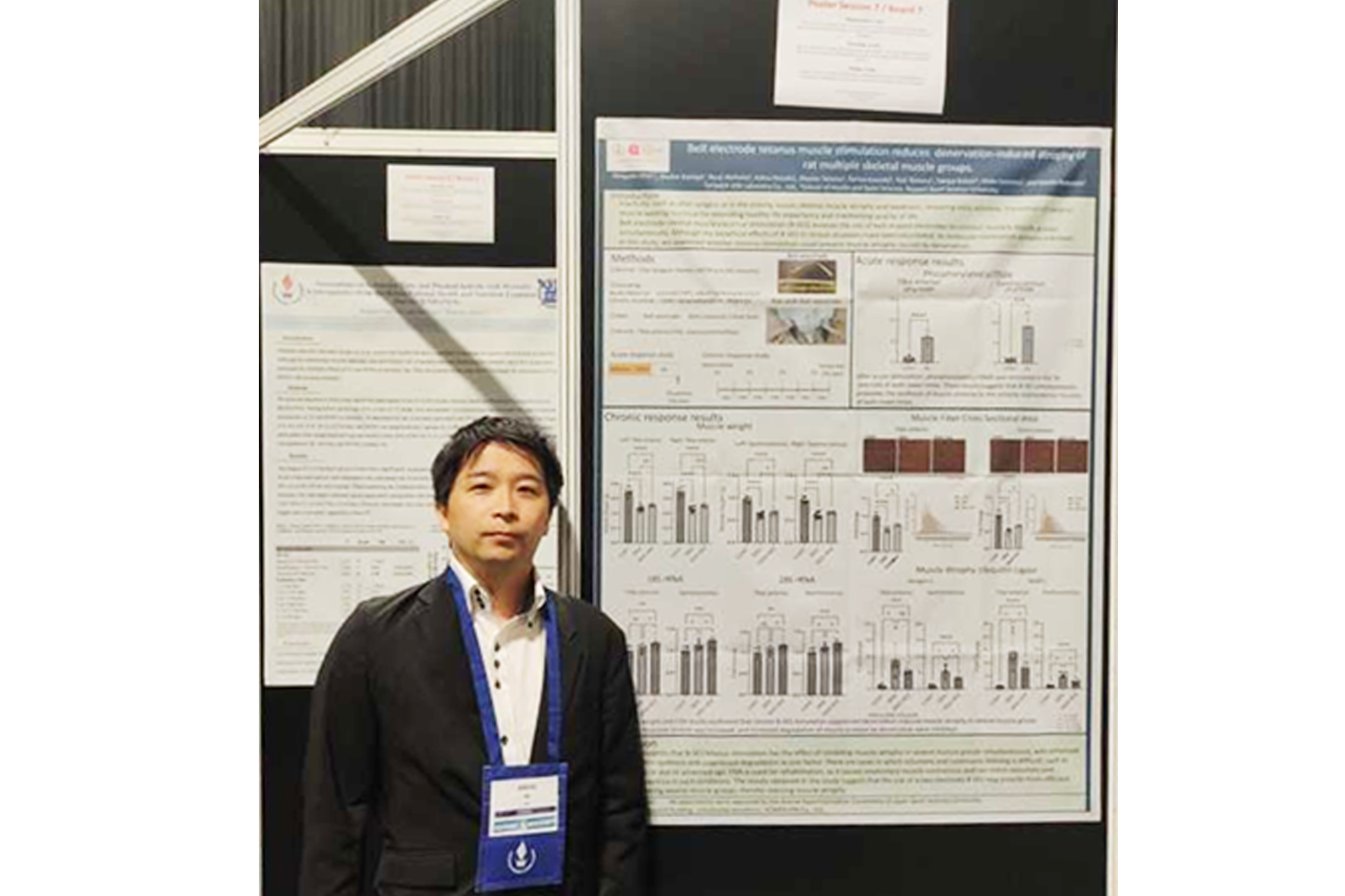
In August, I attended the Japanese Society of Physical Fitness and Sports Medicine. There, I participated in both a luncheon seminar and a presentation session. Looking ahead to next year, I’m planning to attend the Society for Skeletal Muscle Electrical Stimulation and the Japanese Society of Physical Fitness and Sports Medicine again.
Q. Could you share your future research direction and goals, as well as your motivation and expectations for product development?
What’s most important is to “establish solid evidence.” I believe that thoroughly validating the findings uncovered through research, and then applying that validation in practical ways, is crucial. Specifically, my main research focus is currently on the suppression of muscle atrophy, with the aim of contributing to the development of a new type of B-SES. That said, I don’t intend to limit my work to just that area. I believe there is also great potential to pursue research based on requests from both customers and within the company. Suppressing muscle atrophy is especially important for elderly individuals living at home, as well as for patients with internal disorders—such as those in intensive care units or undergoing dialysis. I believe that the research we are currently conducting could be beneficial in those areas as well. Furthermore, there is a possibility of expanding into research related to muscle hypertrophy and strength enhancement. We are also progressing with various collaborative research projects across different fields.
Q. What have you personally learned and how have you grown through your research?
Before joining the company, I had no experience conducting research on muscles. Through working in Professor Nakazato’s lab and engaging in joint research with Nippon Sport Science University, I’ve gradually acquired the necessary knowledge and skills. As I’ve mentioned before, research often involves a significant amount of trial and error, and the process can be time-consuming. But through it all, I’ve come to realize that perseverance is key. By continuing to push through those challenges, I’ve learned to envision how B-SES might truly benefit patients in the future, and how we can help doctors feel confident in using our device. Being able to think that way is something I consider a major personal development and a valuable lesson. I believe that these learnings are what have ultimately led to results such as publishing research papers and presenting at conferences—and that in itself is an achievement. At HOMER ION Laboratory Co., Ltd., we aim to develop products that benefit people, and ultimately patients, by leveraging our expertise in the application of electrical stimulation to the human body, and through ongoing research and joint development with partners in a variety of fields.
Title: Low-frequency electrical stimulation of bilateral hind legs by belt electrodes is effective for preventing denervation-induced atrophies in multiple skeletal muscle groups in rats
Journal: Scientific Reports
Publication Date: December 8, 2022
Volume/Issue: 12(1):21275
DOI: https://doi.org/10.1038/s41598-022-25359-z
Title: Belt electrode tetanus muscle stimulation reduces denervation-induced atrophy of rat multiple skeletal muscle groups
Journal: Scientific Reports
Publication Date: March 11, 2024
Volume: 14:5848
DOI: https://doi.org/10.1038/s41598-024-56382-x
